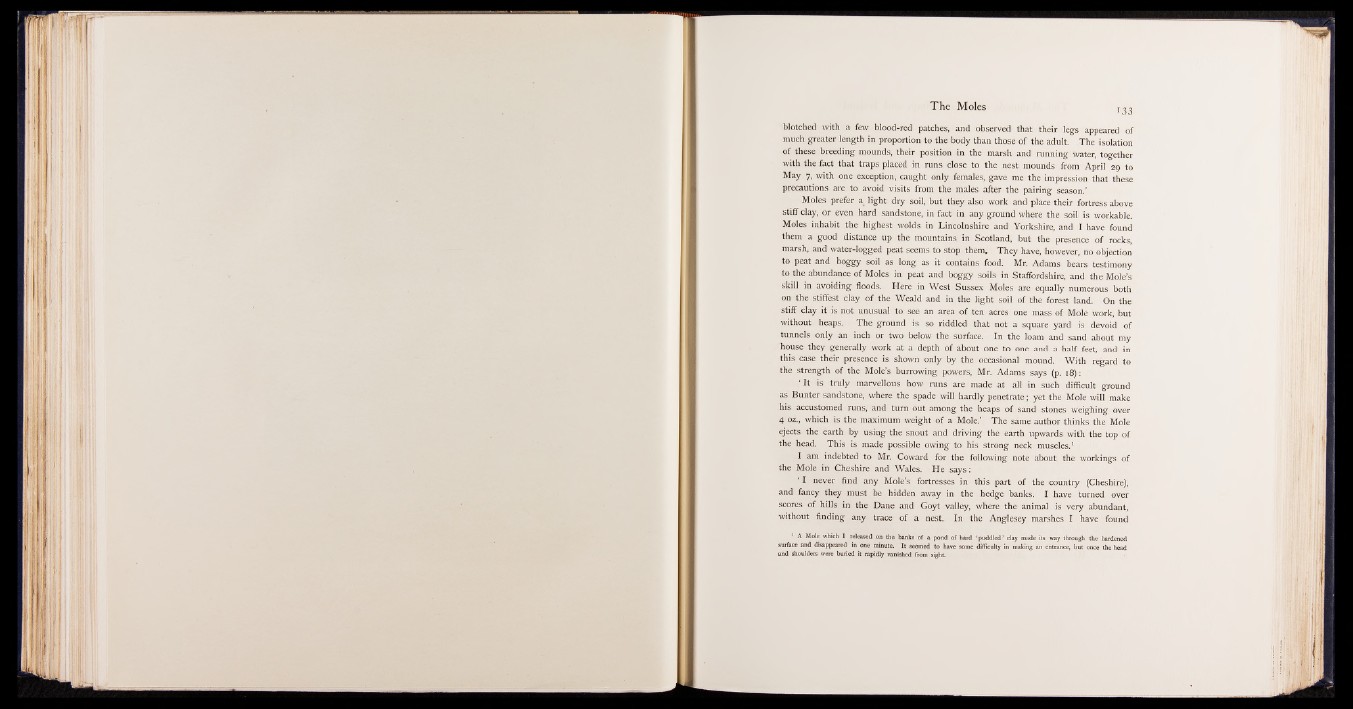
The Moles
blotched with a few blood-red patches, and observed that their legs appeared of
much greater length in proportion to the body than those of the adult. The isolation
of these breeding mounds, their position in the marsh and running water, together
with the fact that traps placed in runs close to the nest mounds from April 29 to
May 7, with one exception, caught only females, gave me the impression that these
precautions are to avoid visits from the males after the pairing season.’
Moles prefer a^ light dry soil, but they also work and place their fortress above
stiff clay, or even hard sandstone, in fact in any ground where the soil- is workable.
Moles inhabit the highest wolds in Lincolnshire and Yorkshire, and I have found
them a good distance up the mountains in Scotland, but the presence of rocks,
marsh, and water-logged peat seems to stop them. They have, however, no objection
to peat and boggy soil as long as it contains food. Mr. Adams bears testimony
to the abundance of Moles in peat and boggy soils in Staffordshire, and the Mole’s
skill in avoiding floods. Here in West Sussex Moles are equally numerous both
on the stiffest clay of the Weald and in the light soil of the forest land. On the
stiff clay it is not unusual to see an area of ten acres one mass of Mole work, but
without heaps. The ground is so riddled that not a square yard is devoid of
tunnels only an inch or two below the surface. In the loam and sand about my
house they generally work at a depth of about one to one and a half feet, and in
this case their presence is shown only by the occasional mound. With regard to
the strength of the Mole’s burrowing powers, Mr. Adams says (p. 18):
‘ It is truly marvellous how runs are made at all in such difficult ground
as Bunter sandstone, where the spade will hardly penetrate; yet the Mole will make
his accustomed runs, and turn out among the heaps of sand stones weighing over
4 oz., which is the maximum weight of a Mole.’ The same author thinks the Mole
ejects the earth by using the snout and driving the earth upwards with the top of
the head. This is made possible owing to his strong neck muscles.1
I am indebted to Mr. Coward for the following note about the workings of
the Mole in Cheshire and Wales. He says:
‘ I never find any Mole’s fortresses in this part of the country (Cheshire),
and fancy they must be hidden away in the hedge banks. I have turned over
scores of hills in the Dane and Goyt valley, where the animal is very abundant,
without finding any trace of a nest. In the Anglesey marshes I have found
1 A Mole which I released on the banks of a pond of hard ‘ puddled* clay made its way through the hardened
surface and disappeared in one minute. It seemed to have some difficulty in making an entrance, but once the head
and shoulders were buried it rapidly vanished from sight.